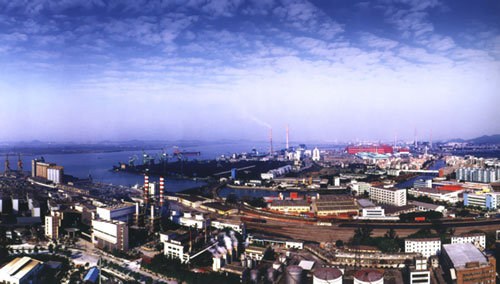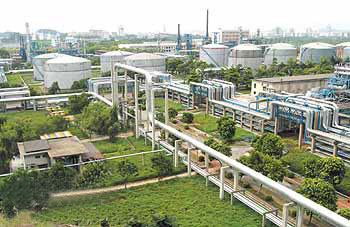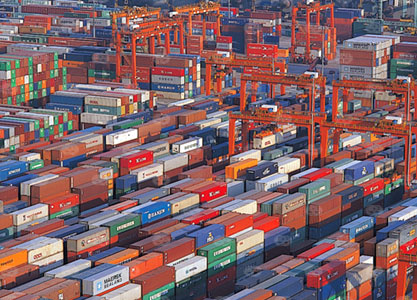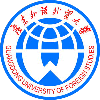Guangzhou Life
Guangzhou is a famous hometown for overseas Chinese. It has the largest population of overseas Chinese people. These overseas Chinese do a great deal of good for Guangzhou: opening international markets, bridging Guangzhou and the rest of the world, and establishing many schools, hospitals, nurseries, kindergartens and rest homes in Guangzhou. Guangzhou is a cultural center. There are also several universities in Guangdong, the Zhongshan University, the South China University of Technology, so on. The city is renowned for its arts and crafts, namely the Guangdong embroidery, ivory-carving and ceramics.
With 2800 years of history, Guangzhou is one of the 24 most famous historical cultural cities and a famous tourist destination. In ancient days, Guangzhou was the capital city for three Chinese Dynasties: the Nan Yue (South Yue), the Nan Han (South Han), and the Nanming (South Ming). There are many historic sights in Guangzhou: the Western Han Nanyue King's Tomb Museum, the Zhenhai Tower and the Sun Yat-sen Memorial Hall etc. Guangzhou became a part of China in the 3rd century. As early as 200 BC, during the reign of the Nanyue Kings, it was a flourishing city. During the Qin Dynasty (221- 206 BC), the emperor conquered the coastal areas at the Pearl River. It lasted another hundred years before the Han Chinese from Northern China supplanted the original inhabitants. During the Tang dynasty (618- 907) sailors and merchants from Persia and Malacca (Hindu and Arab) were common visitors in Guangzhou. Then the city became the first Chinese port regularly visited by European traders. In 1511, Portugal secured a trade monopoly, but it was broken by the British in the late 17th century; in the 18th century, the French and Dutch were also admitted. Annoyed by the trade imbalance, British gained the upper hand over the Qing Dynasty (1644-1911) by dumping opium on Guangzhou. The Chinese generated quite a habit for the stuff and by the 19th century, trade was heavily weighted against the Chinese. The British were feeding the Chinese addiction with cheap Indian opium and ferrying away silk, porcelain and tea. In 1839, Chinese forces seized and destroyed 20,000 chests of the drug. The British didn't take this very well and soon the First Opium War was fought and won by Western forces. Trading, however, was restricted until the Treaty of Nanjing in 1842, which ceded Hong Kong Island to the British. It was during these tumultuous times that thousands of Cantonese left home to seek their fortunes in the US, Canada, Southeast Asia, Australian and even South Africa. Following a disturbance, the French and British forces occupied Guangzhou in 1856. Later the island of Shameen (Shamian) was ceded to them for business and residential purposes, and this reclaimed sandbank with its broad avenues, gardens, and fine buildings was known for its beauty; it was restored to China in 1946. Guangzhou was the seed of the revolutionary movement under Dr. Sun Yat-Sen in December 1911, who was recommended as a temporary President of China. Before Dr. Sun Yat -Sen died, he considered Chiang Kai-Shek would make a great contribution for the party. In 1927, Guangzhou was briefly one of the earliest Communist communes in China. Chiang Kai Shek became the leader of China in 1928 and led the Nationalist Armies northward to establish a government in Nanjing. The fall of Guangzhou to the Communist armies in late October 1949, signaled the Communist takeover of all China. Under the Communist government, Guangzhou was developed as an industrial center and a modern port, with a great trade to and from Hong Kong. There are a lot of interesting legends concerning Guangzhou's past. Monuments everywhere tells of the city's democratic and revolutionary past. The monument to the Anti British struggle at Sanyuanli is in remembrance of the 1841 uprising against a British invading force. The Huanghuagang Park keeps alive the spirit of the 72 martyrs killed in the 1911 uprising against the Manchu Dynasty. The National Peasant Movement Institute is the former cadre-training school founded and run by Mao Zedong and Zhou Enlai in 1925-1926. The Guangzhou Memorial Garden is in memory of those who lost their lives during the Communist Uprising in 1927.
Guangzhou stands at the confluence of the East River, West River and North River, with its land sloping from north-east to south-west, and an alluvial plain in the south and south-west parts. Part of the Pearl River Delta, it adjoins the South China Sea, and is crisscross with rivers and streams. Covering an area of 7434.4 square kilometers (2870 square miles), Guangzhou is home to more than 11 million people, including a 3.7 million transitory population. With the opening of China to the outside world, a large number of people from other regions of China swarmed into Guangzhou, one of the first 'open' cities in China. This has accelerated its economic development. It has south subtropical marine climate with an annual average temperature of 21.8 degree Celsius, rainfall of 1694 millimeters, and a frost-free period of 345 days. It's abundant in agricultural and aquatic resources. Its mineral resources include coal, salt, copper, iron, zinc, lead and limestone.
Guangzhou is the economic centre of the Pearl River Delta where China's leading commercial and manufacturing regions are found. Guangzhou is one of the most important centers of foreign commerce in South China. The Chinese Export Commodities Fair, also called Canton Fair, is held twice a year each spring and autumn. Inaugurated in the spring of 1957, the Fair is a major event for the city. Guangzhou's industry covers machinery, shipbuilding, textiles, sugar-refinery, household electrical appliances, computers, petrochemicals, and light industrial products for daily use, rubber products, and garments. The Guangzhou Economic and Technological Development Zone situated in Huangpu has already taken shape. Guangzhou has advanced agriculture, abounding in rice, sugarcanes, fruits, freshwater fish and oil crops. Efforts are being made to build Guangzhou into an international metropolis functioning primarily as the biggest financial, high-tech and industrial, as well as communication and transport center in South China.
It is convenient and popular in Guangzhou to use motorcycle as transportation means, which is a special local feature. Guangdong Province has made some progress in limiting its air, water, and noise pollution in recent years for pollution problems are still currently rather serious. The province has implemented a series of programs to upgrade its general environmental situation, but there is still a significant way to go before the damage from years of neglect is reversed. |

 Guangzhou is the capital of Guangdong Province.
This city has the nicknames of Wuyangcheng (City of Five Rams),
Yangcheng (City of Rams), Huacheng (City of Flowers), or Suicheng
(City of Wheat). The kapok tree, a tall, native tree that produces
wool fiber in its gorgeous red blossoms, is the city tree of
Guangzhou. Guangzhou is the most populous city in the province
and the fifth most populous in China. It's is one of China's
main industrial, political, economic, scientific, educational
and cultural centers.
Guangzhou is the capital of Guangdong Province.
This city has the nicknames of Wuyangcheng (City of Five Rams),
Yangcheng (City of Rams), Huacheng (City of Flowers), or Suicheng
(City of Wheat). The kapok tree, a tall, native tree that produces
wool fiber in its gorgeous red blossoms, is the city tree of
Guangzhou. Guangzhou is the most populous city in the province
and the fifth most populous in China. It's is one of China's
main industrial, political, economic, scientific, educational
and cultural centers. Guangzhou is located at 112°57'E to 114°3'E and 22°26'N to 23°56'N,
in the middle south of Guangdong Province, north of the Pearl
River Delta. It lies close to the South China Sea, Hong Kong,
and Macau. Zhujiang (The Pearl River), the third largest river
of China, runs through Guangzhou and is navigable to the South
China Sea. Situated in such an excellent geographical region,
Guangzhou is called China's South Gate.
Guangzhou is located at 112°57'E to 114°3'E and 22°26'N to 23°56'N,
in the middle south of Guangdong Province, north of the Pearl
River Delta. It lies close to the South China Sea, Hong Kong,
and Macau. Zhujiang (The Pearl River), the third largest river
of China, runs through Guangzhou and is navigable to the South
China Sea. Situated in such an excellent geographical region,
Guangzhou is called China's South Gate.


 Guangzhou
is South China's biggest national and foreign oriented city with
flourishing commerce, and China's chief foreign trade center as
well. It's also one of China's most historical and cultural city.
The city, with long summers and no winters, is always green with
flowers in bloom all the year round, hence reputed as "Flower
City". As stated above, ffforts are being made to build Guangzhou
into an international metropolis functioning primarily as the biggest
financial, high-tech and light industrial, as well as communication
and transport center in South China.
Guangzhou
is South China's biggest national and foreign oriented city with
flourishing commerce, and China's chief foreign trade center as
well. It's also one of China's most historical and cultural city.
The city, with long summers and no winters, is always green with
flowers in bloom all the year round, hence reputed as "Flower
City". As stated above, ffforts are being made to build Guangzhou
into an international metropolis functioning primarily as the biggest
financial, high-tech and light industrial, as well as communication
and transport center in South China.